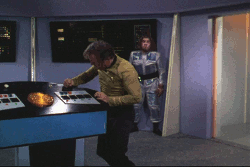“Then there’s the possibility of a tie. This one is a favorite of legal scholars and historians, because it revivifies arcane 18th century constitutional debates and 19th century legal tweaks to the electoral process and turns them loose on the November vote… The short version is that if both men get fewer than 270 Electoral College votes, including the case of a 269-269 tie, all hell breaks loose.
First there will be an attempt to find and sway electors who might be willing to change their votes, since any one elector’s vote could determine the winner. A small-d democrat, for example, might feel it was his duty to vote for the winner of the popular vote even if he had originally committed to the opponent. It’s also possible that a state legislature could try to replace one or several “controversial” electors: the Florida legislature briefly toyed with the idea in 2000, and states are explicitly allowed to do so until Dec. 11.
If no candidate has the support of 270 electors when the college meets and casts votes Dec. 17, the decision goes to the newly elected House, which follows a 225-year-old formula for picking the next President. In a meeting on Jan. 6, each state gets one vote, determined by a vote of the members of its delegation, and a majority of states (26) is required. The House stays in session until a winner is picked.”
-
First there will be an attempt to find and sway electors who might be willing to change their votes, since any one elector’s vote could determine the winner. A small-d democrat, for example, might feel it was his duty to vote for the winner of the popular vote even if he had originally committed to the opponent. It’s also possible that a state legislature could try to replace one or several “controversial” electors: the Florida legislature briefly toyed with the idea in 2000, and states are explicitly allowed to do so until Dec. 11.
If no candidate has the support of 270 electors when the college meets and casts votes Dec. 17, the decision goes to the newly elected House, which follows a 225-year-old formula for picking the next President. In a meeting on Jan. 6, each state gets one vote, determined by a vote of the members of its delegation, and a majority of states (26) is required. The House stays in session until a winner is picked.”
-
Election Nightmare Scenarios: What Could Happen on Nov. 7? | TIME.com
The House of Representatives picking the president?
